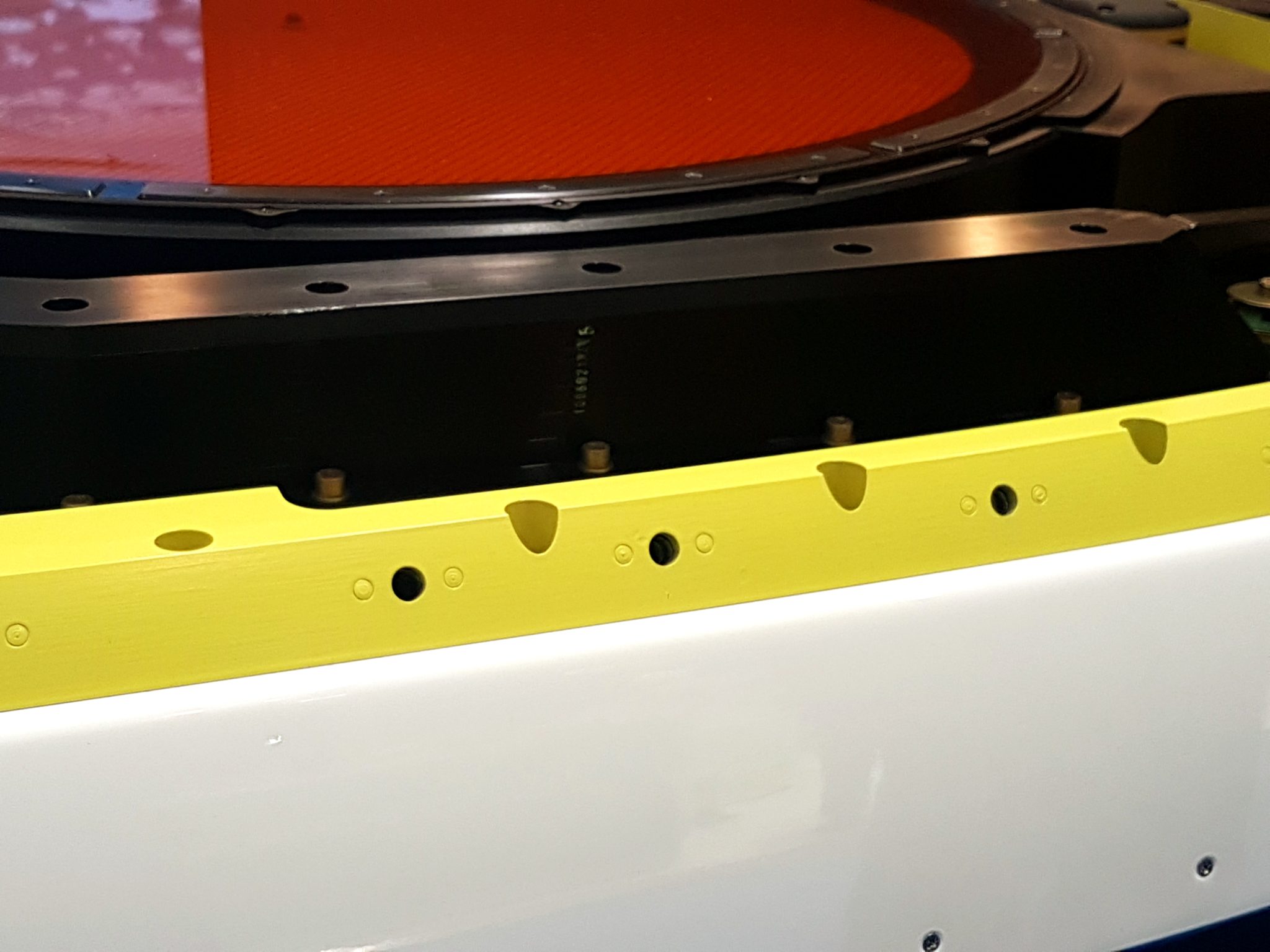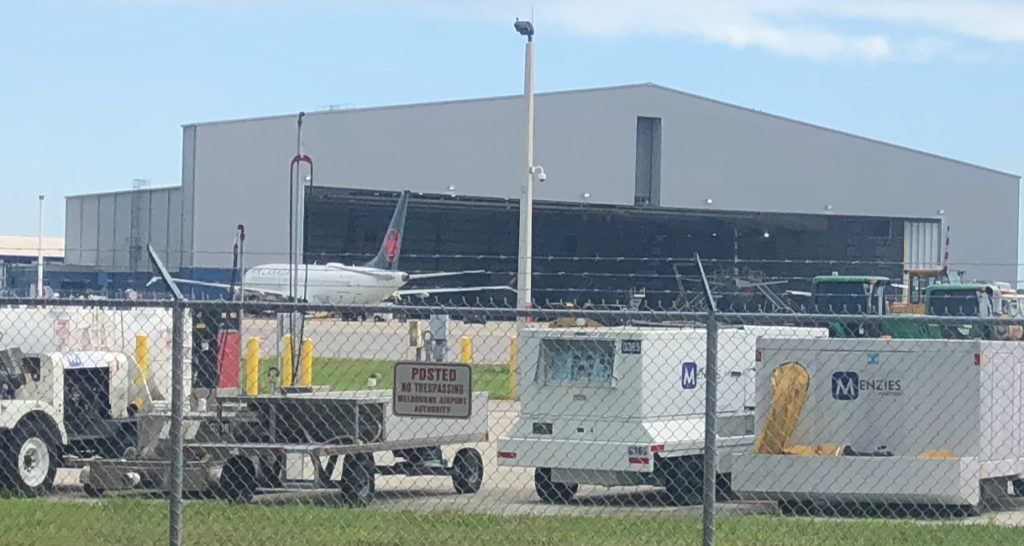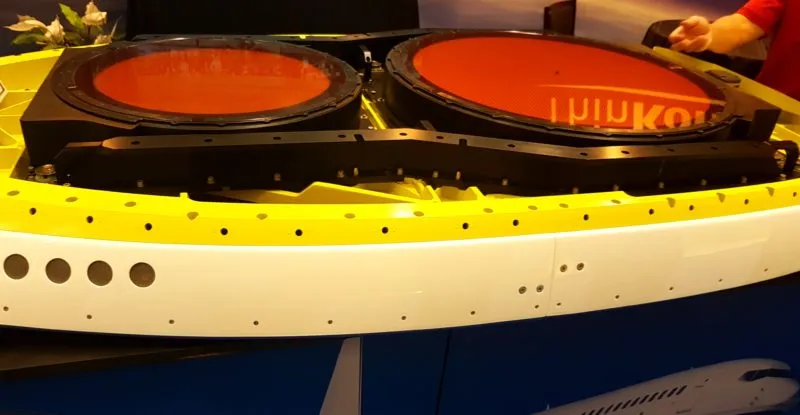When Gogo early this year revealed it was grappling with the problem of deicing fluid seeping under antenna radomes, ThinKom Solutions’ Ku3030 antenna – which had been white labeled by Gogo as 2Ku – was thrown into the (some might say) inglorious spotlight.
Though ThinKom wasn’t necessarily tarred with the same brush, the firm found itself in the unenviable position of speaking about a package that wasn’t entirely its own because the radome had been separately sourced by Gogo – originally from Cobham (as first reported on RGN), and then Meggitt, which acquired Cobham’s composites business in 2015.
Now, with the benefit of hindsight, ThinKom has opted to offer its Ka2517-branded Ka-band antenna to the market inclusive of the radome, and it believes the system could go-live on commercial aircraft before the end of the year.
As ThinKom becomes more vertically integrated, “we wrap and warrant the radome and do the whole package for the Ka” antenna, and that ensures the firm has a level of “control”, explains ThinKom CTO Bill Milroy to RGN.
To be clear, ThinKom isn’t making the radomes itself. “By in-house I mean we buy the radomes but I mean we’re responsible,” explains Milroy.
So, this was a lesson learned sort of thing? “Well, hindsight is always 20/20 but we were a much smaller company when we first started with Gogo, so it’s not like we fought to take on the radome responsibility,” he says.
ThinKom isn’t saying which radome provider has been selected for the Ka2517, with Milroy noting simply that “there is actually quite a few and we change”. Indeed, there are a number of radome manufacturers, and as your author has noted in the past, squeezing radome information from this industry can be like squeezing blood from a stone. Yet we persist…
Interestingly, ThinKom’s decision to take greater ownership of the package – and become a FAA repair station – is also “what the service providers generally want to have”.
He adds, “We think it is useful because we really think a unified, integrated solution is always going to be the better solution for everything from weight [to] reliability. So, we can stand up and speak to the reliability of the entire system because we are responsible for the entire system.”

ThinKom may be best known for its Ku-band antenna, which was white labeled by Gogo as 2Ku, but it also has a Ka-band antenna on offer, and is eyeing commercial airline launch before year-end. Image: Becca Alkema
ThinKom, meanwhile, has made some tweaks to its Ku3030 antenna hardware to support Gogo’s efforts to fully remedy the moisture issue, which saw deicing fluid and cleaning fluid degrade antenna performance, and require some outright replacements. The firm has been “supporting Gogo and we are shipping product which has additional protections in it which we like to think is a belts/suspender [approach] because Gogo has been also working on the radome itself so double protection is better,” explains the ThinKom CTO.
Though ThinKom is hoping to see the commercial launch of Ka2517 before the end of the year, the system has been flying on the US government’s E-4B National Airborne Operations Center aircraft, and is speaking to Inmarsat Global Xpress’ Ka-band satellite network, as reported by Get Connected.
RGN would be remiss if we didn’t mention there are *questions* about whether ThinKom’s Ka2517 has somehow found its way on top of Air Canada’s Boeing 737 MAX aircraft, as photos of the MAX show an awfully slim antenna profile – much like 2Ku. And naturally the Ka2517 could support Thales Ka, if indeed the latter is confirmed as service provider (financial services firms have already suggested Thales is the provider).  Is this Gogo 2Ku, Thales Ka using Ka2517, a strategic collaboration between the two providers, something else? When RGN mentioned the Air Canada hump to Milroy he demurred, saying simply, “Now I can’t say too much about that.”
Is this Gogo 2Ku, Thales Ka using Ka2517, a strategic collaboration between the two providers, something else? When RGN mentioned the Air Canada hump to Milroy he demurred, saying simply, “Now I can’t say too much about that.”
If nothing else, the low profile of the 2Ku system is spurring some change out there.
For its part, Air Canada promised late last year that the MAX would offer “faster Wi-Fi due to antennas with the highest bandwidth available in the industry, available starting in early 2018”. Its wifi equipage page suggests that 0% of its MAXs are offering live connectivity.
ThinKom has clearly positioned itself to secure business in Ku, Ka and indeed hybrid networks, as first highlighted by Gogo when it said 2Ku could support service in an Intelsat/OneWeb GEO/LEO environment, and as it demonstrated on the ground with the Ka2517 via O3b MEO satellites recently.
Milroy says the firm is making some inroads in terms of the feedback it is receiving from the airlines who say, “oh you can do LEO, MEO and GEO? Oh you have a Ku solution and you have a Ka solution?” In so doing, he adds, “we are taking a lot of risk out from the cost risk standpoint and a lot of risk from the whole ‘what’s the future going to look like – LEO, MEO, GEO?’”
Global Eagle is on record saying it is paying attention to ThinKom’s work in Ka. And it’s probably safe to say ThinKom technology may be considered as Panasonic and Inmarsat mull next gen terminals for GX, particularly given that the Ka2517 antenna is already speaking to GX on government aircraft.
For Milroy, remaining band agnostic is key. “So, I think I’m even on record in terms of – we see attributes of both Ka and Ku. We think it’s an awful close race. We don’t necessarily see Ka necessarily as the future, and Ku as the past. We think that’s sort of short minded,” he says.
“It seems like Ka started the HTS battle, and then Ku Epic and others matched it. Now we kind of have more of the ViaSat-2 and ViaSat-3; will Intelsat respond with an XTS? So, just looking at it from a technical standpoint, if I were an attorney, I could argue either case in terms of why one is better than the other. But since we offer both antennas, the best thing is for me to keep my mouth shut.”
As for Gogo, Milroy has “only really good things to say” about the firm, noting that Gogo pays its bills, which is a good sign of health and as a customer, Gogo has been very collaborative with ThinKom, with north of 900 units flying and commitments for 2,100 in total. “I think they are kind of unfairly [targeted] but we can’t, we really, we are once removed from that so the market has to make its own decisions there, and we want to do whatever we can to help Gogo prevail and grow as a company.”
Related Articles:
- Moisture under the antenna hood? It’s not just deicing fluid
- Thales InFlyt could consider collaboration with Gogo: CEO Carette
- Panasonic to sell GX connectivity to airlines in deal with rival Inmarsat
- Gogo pursuing multiple avenues to remedy 2Ku antenna moisture issues
- ThinKom sees clear path to supporting LEOs and MEOs with its antennas
- Intelsat, OneWeb work to bring new economics to Ku connectivity
- Saudia readies for near-term launch of new hybrid inflight connectivity
- Panasonic assures it is committed to XTS plan despite Inmarsat pact
- Thales reveals plan for global, high-capacity Ka inflight connectivity
- Stakeholders make pointed remarks as flat panel competition hots up
- Polar positioning could take a number of flavors as Viasat eyes MEO
- Panasonic hones XTS satellite plan to preserve capital for LEOs
- Gilat makes the case for seamless roaming, ISP cooperation
- Keen on connectivity? Let’s talk about the hood
- Gogo picks Cobham for 2Ku radome; eyes more trial airlines
- Antenna maker ThinKom eyes commercial Ka connectivity space












